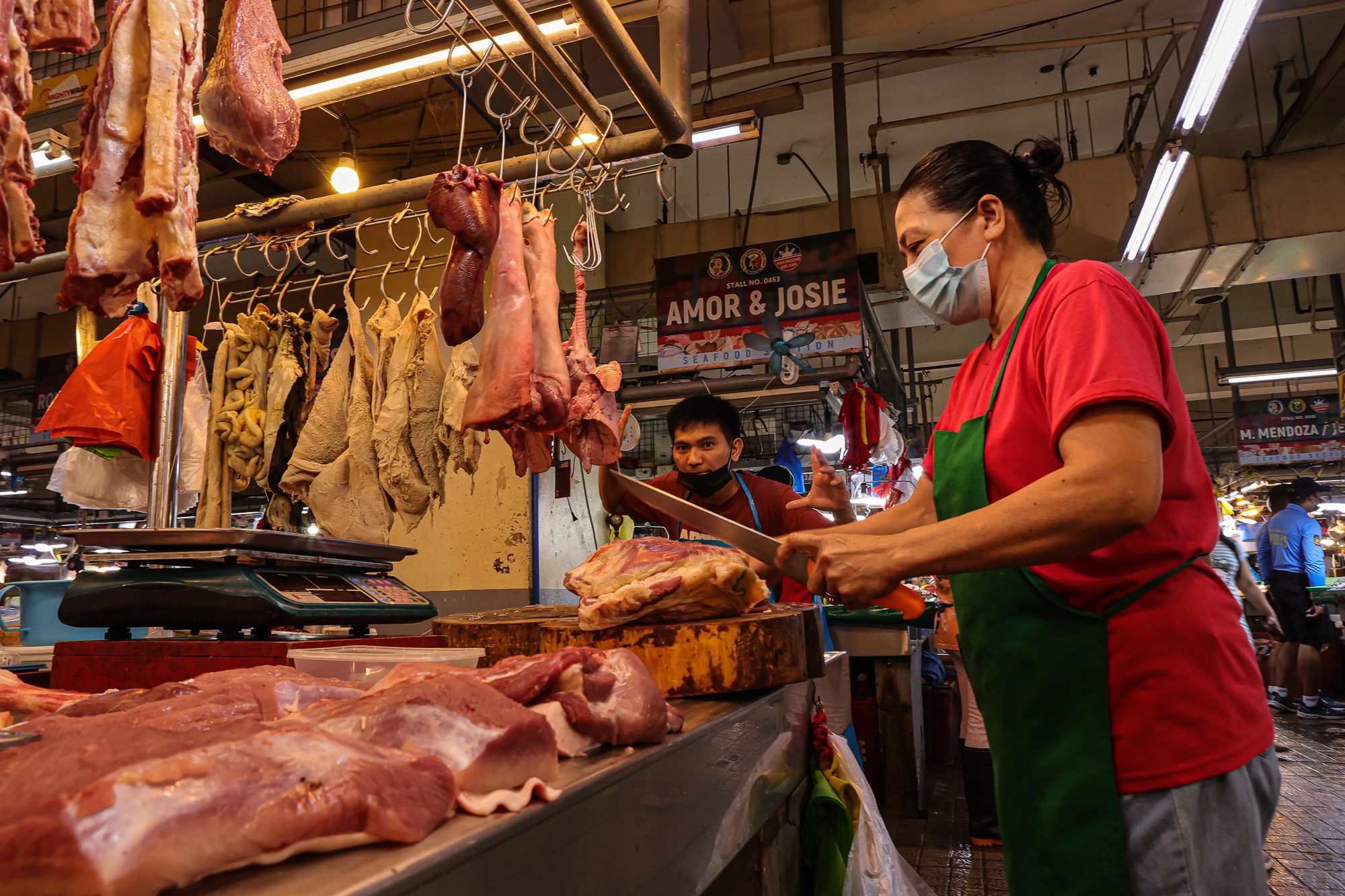SUMMARY
This is AI generated summarization, which may have errors. For context, always refer to the full article.

MANILA, Philippines – Food prices continued to accelerate at a slower pace, pushing down the inflation rate to 6.6% in April, the Philippine Statistics Authority (PSA) reported on Friday, May 5.
The latest figure is lower than the 7.6% recorded in March, marking the third consecutive month of deceleration.
A year ago or in April 2022, inflation was at 4.9%.
Year-to-date, inflation stands at 7.9%, still much higher than the target range of 2% to 4%.
Food inflation declined to 8% in April from 9.5% in March due to slower inflation of vegetables, fish, eggs and other dairy products, meat, and sugar.
Non-food inflation also decelerated to 5.5% from 6.3%, mainly due to slower electricity inflation and a further easing in private transport as prices of diesel, gasoline, and liquefied petroleum gas continued to decline.
“With these developments, NEDA is optimistic that the downward trend will continue and settle further within the government’s outlook,” said National Economic and Development Authority Secretary Arsenio Balisacan.
Risks
Despite the slowdown for three consecutive months, NEDA said the risks to the inflation outlook remain tilted toward the upside due to potential transport fare increases, wage adjustments, and domestic food supply pressures. The looming El Niño and the resurgence of African swine fever are also seen to put pressure on prices.
“It is important to design policies and interventions to help those that will be affected by El Niño, through the provision of seeds or seedlings of non-water-loving crops or crop varieties. Additionally, the government must remain proactive in curbing animal disease outbreaks through stronger border protection and monitoring,” Balisacan said.
The Bangko Sentral ng Pilipinas (BSP) also noted that its inflation outlook for 2023 and 2024 remains tilted heavily toward the upside.
“Despite the recent slowdown in food inflation, the potential effect of ongoing supply shortages continues to pose an upside risk to the outlook. Other upside risks emanate from the impact of higher transport fares, increasing electricity rates, as well as above-average wage adjustments in 2023,” the BSP said.
On the downside, the BSP said weaker-than-expected global economic recovery is the main factor that could dampen inflation.
The BSP Monetary Board will hold its next monetary policy meeting on May 18 to determine interest rates. It will factor in the latest inflation print, as well as the upcoming release of first quarter gross domestic product data on Thursday, May 11.
President Ferdinand Marcos Jr.’s economic team earlier revised the government’s inflation outlook upward to between 5% and 7% for the entire 2023, given the persisting high food, energy, and transport costs.
Prices remaining high is Marcos’ stickiest economic issue so far, with 52% or majority of Filipinos disapproving of his administration’s performance in controlling it, based on a Pulse Asia survey conducted in March.
While inflation is a gut issue felt across socioeconomic classes, however, Filipinos are still satisfied with Marcos’ leadership, according to a survey by the Social Weather Stations. – Rappler.com
Add a comment
How does this make you feel?
![[ANALYSIS] A new advocacy in race to financial literacy](https://www.rappler.com/tachyon/2024/04/advocacy-race-financial-literacy-April-19-2024.jpg?resize=257%2C257&crop_strategy=attention)


![[In This Economy] Can the PH become an upper-middle income country within this lifetime?](https://www.rappler.com/tachyon/2024/04/tl-ph-upper-income-country-04052024.jpg?resize=257%2C257&crop=295px%2C0px%2C720px%2C720px)

There are no comments yet. Add your comment to start the conversation.